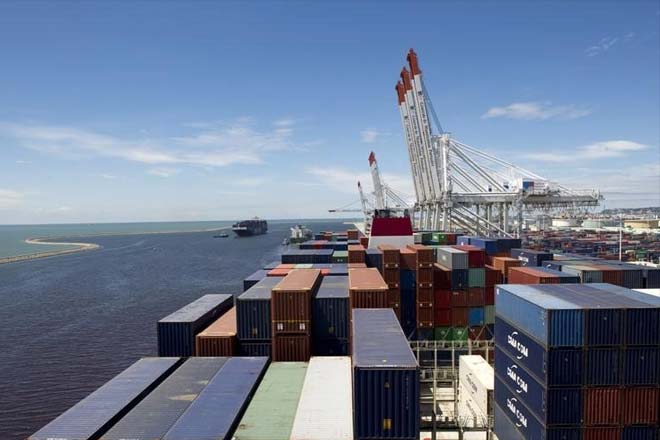
Incentives include payment of sales tax refunds through promissory notes, exemption from sales tax for imported plant and machinery for Greenfield industrial units, reduction or removal of customs duty on raw material and changes to export-oriented schemes in order to facilitate small and medium enterprises (SMEs).
Furthermore, the government has also taken steps to ease visa requirements for travellers and investors in Pakistan. Although such measures project the current government as business and investment-friendly, the export-oriented policies promoting industrial transformation are necessary to achieve the desired outcome.
It is important to highlight that the success of the China-Pakistan Economic Corridor (CPEC) depends on complementary policies that promote integration of Pakistan into global and regional value chains.
As CPEC is part of a multinational transportation network and involves the setting up of industrial zones, it is obvious that the government must improve its overall competitiveness in the business environment to attract foreign investment and reduce the cost of trading across borders to achieve the objective of CPEC.
According to the Board of Investment (BOI), Pakistan received foreign direct investment (FDI) of more than $3 billion in FY18. In FY15, the FDI into Pakistan was less than $1 billion. Before FY14, Pakistan received a majority of the FDI from richer countries such as the US, the UK, Switzerland, the Netherlands, the UAE and Hong Kong.
However, since FY14, China is the most important source of FDI in Pakistan. Historically, oil and gas has been the sector of choice for the FDI in Pakistan. However, in FY18, approximately $1 billion worth of FDI was reported in the power sector and more than $708.5 million in the construction sector. Unfortunately, FDI inflows into manufacturing industries, such as textile and chemical, are negligible.
Value addition in the manufacturing sector as a percentage of GDP, extracted from the World Development Indicators, is declining in Pakistan. From 14% in 2012, it decreased to 12% in 2017. This value is the lowest since 1962. It had peaked at 17.5% in 2005.
The percentage change in large-scale manufacturing items, reported by the State Bank of Pakistan, has been negative for July to November 2018 over the same months in 2017. On the other hand, both exports and imports as a percentage of GDP have fallen since 2013.
Exports as a percentage of GDP were at 8.2% in 2017 - the lowest since 1972. Although Pakistan has reported highest imports in absolute terms, these were only 17.6% of GDP in 2017. They were lower than the level between 2005 and 2014.
Export-boosting policies needed
In essence, the burgeoning trade deficit is more a consequence of a lack of export growth over the last five years. Therefore, it is imperative that policies are introduced to increase exports. Although the initiative is taken by the government, it is essential to ensure that Pakistani businesses participate in global and regional value chains.
Participation in global value chains (GVC) will have tremendous benefits for Pakistan, but it will require export-oriented policies. GVCs involve different stages of output across different countries. It requires free flow of investment, goods as well as knowledge across countries.
Therefore, the countries which provide the most competitive mix of inputs, including raw material, physical capital and human capital, are likely to be the most important destinations to attract GVCs.
Pakistan even with its abundant labour resources and domestic production of cotton has yet to make a mark in global exports of clothing articles. Analysing trade data of the UN Comtrade, it can be noted that with only $5 billion worth of exports of clothing articles, Pakistan has 1% share in the global market worth more than $450 billion.
On the other hand, Bangladesh exported more than $34 billion and Vietnam exported more than $24 billion of clothing. The two countries have taken advantage of tariff concessions awarded by developed countries, which have helped enhance their position as important participants in GVCs.
Furthermore, countries such as Cambodia and Indonesia have exported higher-value clothing than Pakistan.
On the other hand, the demand for imports of intermediate goods to make apparels increases as a country participates in GVCs. For instance, Vietnam imported more than $14 billion worth of intermediate apparels (as classified by the World Integrated Trade Solution).
Govt working on policies to boost exports
Similarly, Bangladesh imported $8 billion worth of intermediate goods in 2015 in order to convert them into final goods.
Even large cotton-growing countries such as China and India import inputs, such as fabric and yarn, to improve their competitiveness. Participation in GVCs will require rationalisation of tariffs and abandoning the practice of imposing regulatory duties on imports.
Pakistan undertook tariff reforms in the mid-2000s, which not only increased its imports but it was also accompanied by a significant export growth.
Analysing data available with the World Bank’s World Development Indicators, the trajectory for import-weighted tariff rates on the import of primary goods is found to be relatively flat since 2008. On the other hand, the import-weighted tariff rates for Bangladesh, India and Vietnam have been more volatile in recent years, indicating that they are willing to adopt tariff policies to accommodate import demand.
Therefore, Pakistan needs to adjust its tariff policies to account for the demand of its imported inputs if it is to increase its participation in GVCs. As recommended by the United Nations Conference on Trade and Development (Unctad) in its report on entrepreneurship and structural transformation, policies to promote business growth in Pakistan must be consistent and coherent across government bodies.
The government must ensure that public support is provided to the right firms that are likely to achieve high growth rates and have a favourable impact rather than the firms that are in the declining phase.
Finally, the government must promote linkages between different firms within and across sectors, trading domestically as well as in international markets. This will ensure the best mix of inputs to produce the most competitive range of output and increase exports of Pakistan.
The writer is the Assistant Professor of Economics and Research Fellow
at CBER, IBA
Published in The Express Tribune, February 11th, 2019.
Like Business on Facebook, follow @TribuneBiz on Twitter to stay informed and join in the conversation.





1719053250-0/BeFunky-collage-(5)1719053250-0-270x192.webp)











COMMENTS
Comments are moderated and generally will be posted if they are on-topic and not abusive.
For more information, please see our Comments FAQ